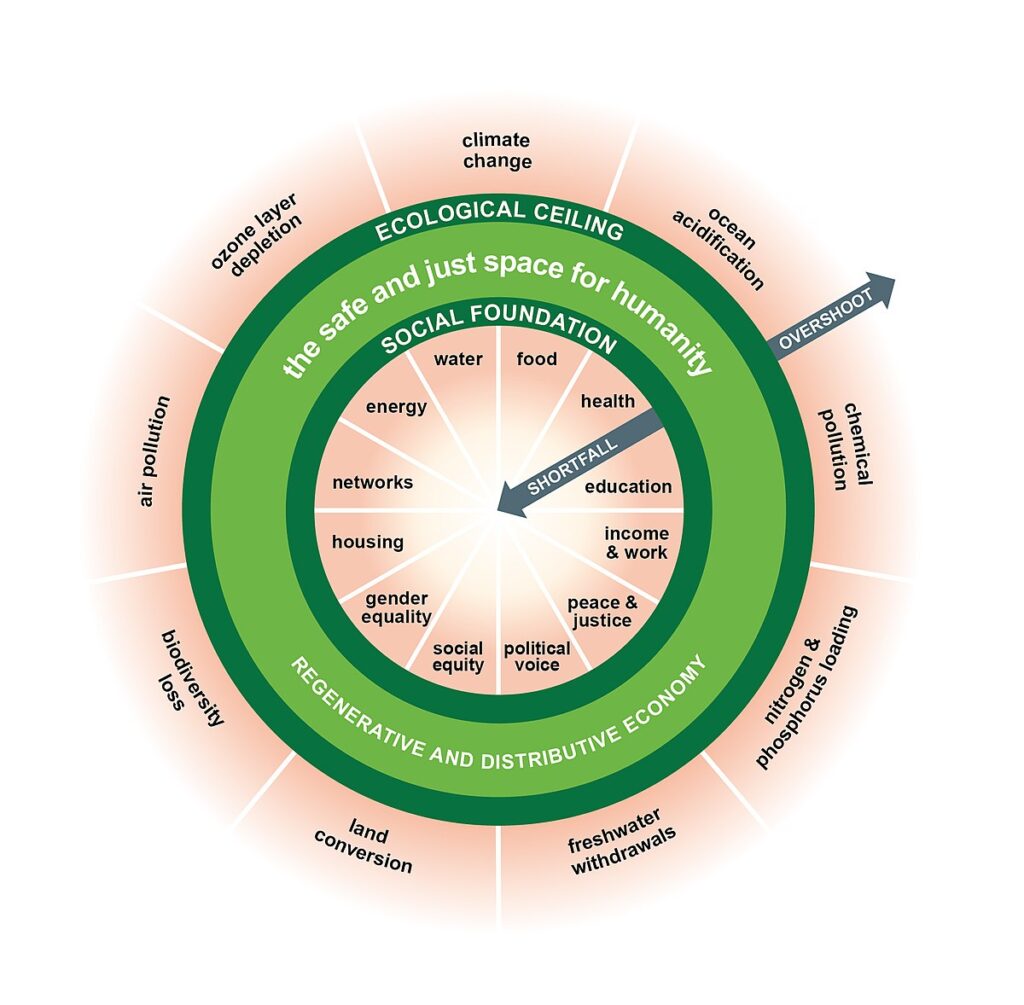The social dimension of sustainability was not as visible in policy-making as the economic – and partly the environmental – dimensions until about three decades ago. Social capital encompasses collective responsibility, trust, networks, shared knowledge, and social structures, as a public good that will not be depleted as long as it is being used but will diminish quickly if not used. Eminent scholars, such as Robert Putnam, first drew attention to the importance of social capital and its linkages with other types of capital in the 1990s.
Some researchers consider that sustainability is an advancement of the environmental justice movement which emerged in the 1980s through the convergence of social and environmental activism. Environmental justice can be described as the right to a clean and safe environment for all. It is the foundation of calls for a more equitable distribution of resources, services, and facilities between and within generations, but also of the sociocultural and health impacts of environmental degradation.
Under the umbrella of environmental justice, the relationship between environmental degradation and social capital has three main characteristics: 1) both aspects progress in parallel, as “human inequality is bad for environmental quality”, 2) environmental impact is disproportionately higher for the poorest, and 3) both aspects should be parts of a holistic SD approach. Environmental justice emphasizes an anthropocentric viewpoint leaning toward weak sustainability, but when it advocates for equity (not only among humans but also with nature and ecosystems) and includes Indigenous justice, it becomes just sustainability, i.e., “environmental quality-human equality” for present and future generations.
Environmental sustainability is fundamental but considerations of social equity and well-being have to be integrated with environmental and economic considerations in any sustainability discussion. Social sustainability has been gaining momentum for instance by becoming an objective for grassroots movements. By subscribing to strong sustainability and embracing justice and equity within the ecological limits to growth, just sustainability can help achieve community sustainability through social interaction, trust, and a sense of security and place.
Raworth’s “doughnut economics” framework has recently enriched sustainability theory and practice by proposing the need to consider social boundaries (meeting everybody’s basic needs) in addition to the planetary ecosystem boundaries. The goal is to ensure well-being for all humanity: this framework converges the planetary boundaries research with the just sustainability approach presented above.

Bibliography
Agyeman, J. (2013).Introducing just sustainabilities: Policy, planning, and practice. Zed Books.
Agyeman, J., Bullard, R. D., & Evans, B. (2002). Exploring the Nexus: Bringing Together Sustainability, Environmental Justice and Equity.Space and Polity,6(1), 77–90. https://doi.org/10.1080/13562570220137907
Hassan, A. M., & Lee, H. (2015). The paradox of the sustainable city: Definitions and examples.Environment, Development and Sustainability,17(6), 1267–1285. https://doi.org/10.1007/s10668-014-9604-z
Putnam, R. D. (1995). Bowling Alone: America’s Declining Social Capital.Journal of Democracy,6(1), 65–78. https://doi.org/10.1353/jod.1995.0002
Raworth, K. (2017). A Doughnut for the Anthropocene: Humanity’s compass in the 21st century.The Lancet Planetary Health,1(2), e48–e49. https://doi.org/10.1016/S2542-5196(17)30028-1
Rockström, J., Steffen, W., Noone, K., Chapin, F. S. I., Nykvist, B., de Wit, C. A., Hughes, T., van der Leeuw, S., Rodhe, H., Sörlin, S., Snyder, P. K., Costanza, R., Svedin, U., Falkenmark, M., Karlberg, L., Correll, R. W., Fabry, V. J., Hansen, J., Walker, B., … Foley, J. (2009). Planetary Boundaries: Exploring the Safe Operating Space for Humanity.Ecology and Society,14(2), 32. https://doi.org/10.1007/s13398-014-0173-7.2
Roseland, M. (2012).Toward Sustainable Communities: Solutions for Citizens and Their Governments(4th ed.). New Society Publishers.
Salcido, R. (2016). Reviving the Environmental Justice Agenda.Chicago-Kent Law Review,91(1), 115–137.
Williams, C. C., & Millington, A. C. (2004). The Diverse and Contested Meanings of Sustainable Development.The Geographical Journal,170(2), 99–104. https://doi.org/10.2307/3451586

















